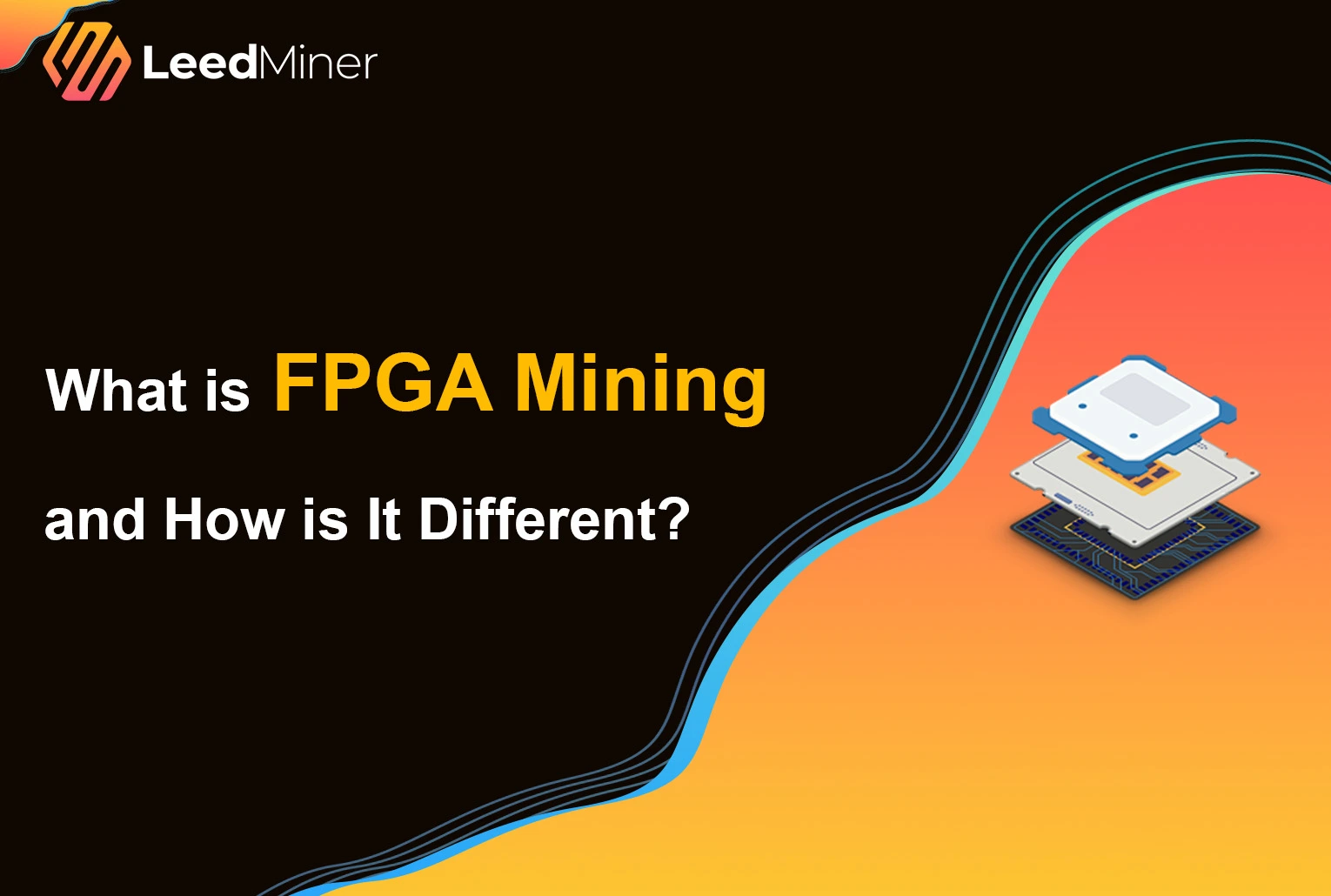SUMMARY
As cryptocurrency mining evolves, so does the hardware powering it. From CPUs to GPUs to ASICs, each generation brings a trade-off between flexibility, efficiency, and specialization. One less talked-about, yet highly versatile mining solution is FPGA mining. Sitting between GPUs and ASICs, FPGAs offer a unique blend of reprogrammability and performance.
Let’s explore what FPGA mining is, how it works, and how it compares to other mining options.
What is FPGA?
FPGA stands for Field-Programmable Gate Array. It’s an integrated circuit that can be reprogrammed after manufacturing to perform different digital logic tasks. Originally developed for industries like aerospace, telecommunications, and embedded systems, FPGAs have found a niche in cryptocurrency mining due to their:
- Customizability – Logic functions can be tailored to different mining algorithms.
- Parallel processing – Great for handling the repetitive, high-volume calculations of mining.
- Energy efficiency – Performs better per watt than most GPU rigs for certain algorithms.
Q1: What does FPGA stand for and how does it work? FPGA means Field-Programmable Gate Array. It’s a chip that allows you to upload custom bitstreams, configuring it to execute specific tasks—like mining cryptocurrencies.
How FPGA Mining Works
Unlike ASICs (which are hardwired for one algorithm), FPGAs can be “reprogrammed” using bitstreams—digital blueprints that define how the chip should behave. This means one FPGA can mine multiple algorithms, though only one at a time.
A typical FPGA mining setup involves:
- A dedicated FPGA board (e.g., Xilinx or BittWare)
- A host computer or control board
- Mining software and bitstream files
- Cooling solutions (often fan-based or custom liquid setups)
FPGAs can mine a variety of algorithms including:
- SHA-256 (Bitcoin, Peercoin)
- Blake2b (Siacoin)
- Keccak (SmartCash)
- Lyra2Rev2 (Vertcoin, Monacoin)
Q2: Can FPGAs mine different cryptocurrencies? Yes, by uploading different bitstreams, FPGAs can switch between algorithms and mine a variety of coins.
FPGA vs GPU vs ASIC: What’s the Difference?
| Feature | FPGA | GPU | ASIC |
|---|---|---|---|
| Flexibility | High | Moderate | None |
| Efficiency | High | Moderate | Very High |
| Reprogrammable | Yes | No | No |
| Cost | Medium–High | Medium | High |
| Algorithm Support | Multi (one at a time) | Multi (concurrent) | Single only |
Q3: Is FPGA better than GPU for mining? It depends. FPGAs are more efficient and customizable than GPUs, but they require deeper technical knowledge and are less plug-and-play.
Advantages of FPGA Mining
FPGA miners appeal to users who want more control and long-term flexibility. Key benefits include:
- Algorithm Agility: Quickly adapt to new or profitable algorithms.
- Lower Power Draw: More energy-efficient than GPUs on many algorithms.
- Extended Relevance: ASICs can become obsolete fast; FPGAs stay relevant with new bitstreams.
- Custom Optimization: Developers can fine-tune bitstreams to increase efficiency or performance.
Limitations and Challenges
Despite their strengths, FPGAs aren’t for everyone. Some of their drawbacks include:
- Steep Learning Curve: Requires knowledge of FPGA platforms, bitstreams, and sometimes HDL (hardware description languages).
- Higher Initial Cost: FPGA boards can be expensive and often don’t include bundled software.
- Limited Community Support: Compared to GPUs and ASICs, fewer users means fewer tutorials and forums.
- Complex Configuration: You may need to compile your own bitstreams or tweak third-party ones for best results.
Who Uses FPGA Miners?
FPGA miners are most commonly used by:
- Technical miners who want to experiment and fine-tune performance.
- Developers and researchers working on new algorithms or coins.
- Early adopters of new coins that don’t yet have ASIC support.
- Niche miners looking for profitability in less crowded, FPGA-friendly coins.
The Future of FPGA Mining
As ASICs continue to dominate the mainstream, FPGA mining remains strong in specific use cases:
- ASIC-resistant algorithms are often best mined with GPUs or FPGAs.
- FPGA-as-a-Service (FPGAaaS) platforms are emerging, allowing users to rent FPGA resources remotely.
- Bitstream marketplaces may grow, offering pre-optimized mining configurations for various coins.
- Hybrid FPGA-ASIC designs could appear for dynamic switching or multi-algo support.
Conclusion
FPGA mining sits at the intersection of flexibility and efficiency. It’s not as beginner-friendly as GPU mining, and it’s not as fast or specific as ASICs, but it offers an ideal option for miners who want:
- Algorithm flexibility
- Energy efficiency
- Reprogrammable hardware
- Long-term adaptability
If you’re technically inclined and ready to invest time in understanding bitstreams and hardware logic, FPGA mining can offer a profitable and rewarding mining experience.



